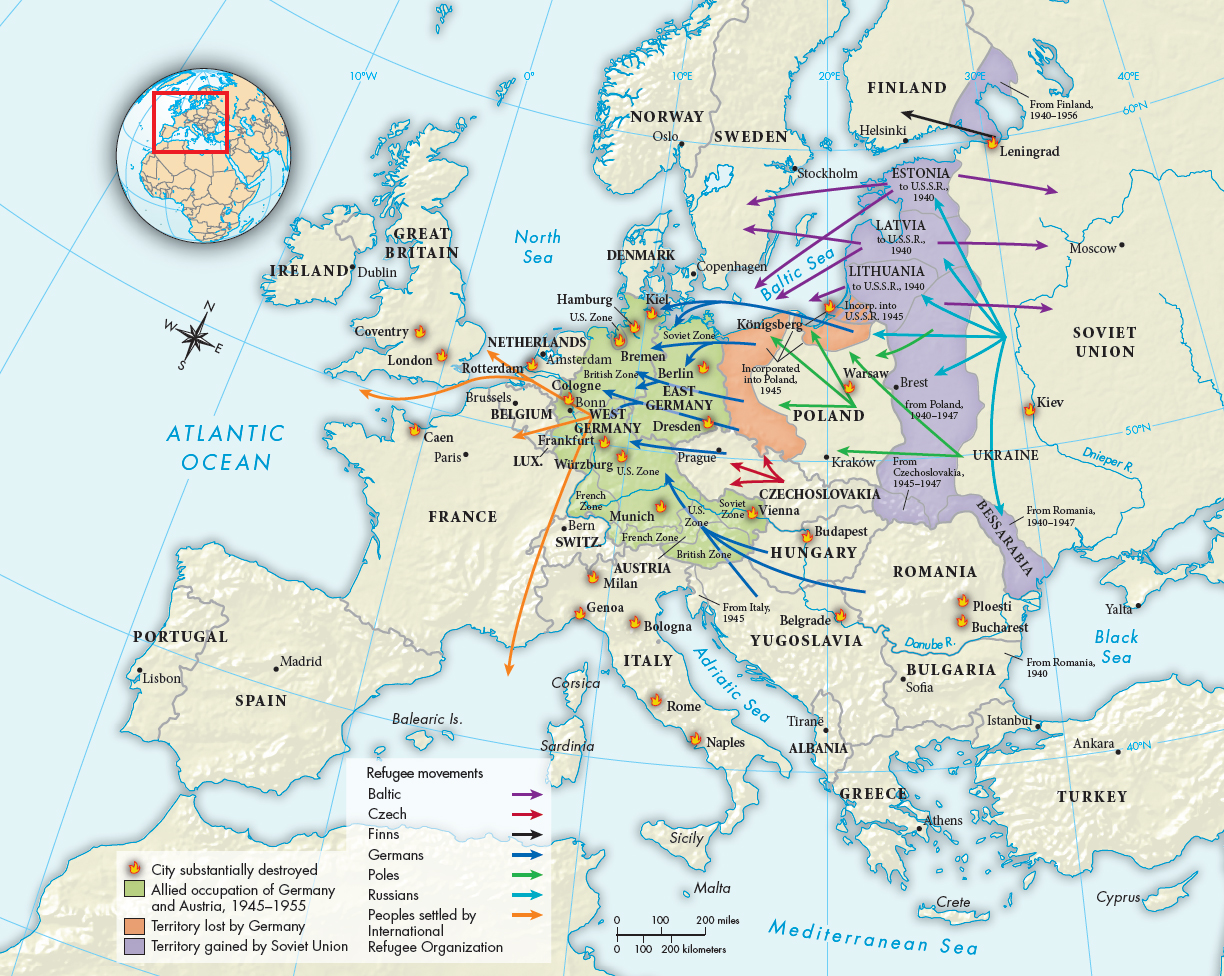The Legacies of the Second World War
In the summer of 1945, Europe lay in ruins. Across the continent, the fighting had destroyed cities and landscapes and obliterated buildings, factories, farms, rail tracks, roads, and bridges. Many cities were completely devastated. The human costs of the Second World War are almost incalculable (Map 28.1). The death toll far exceeded the mortality figures for World War I. In total, about 50 million human beings perished in the conflict.

CONNECTIONS: What does the widespread movement of people at the end of the war suggest about the war? What does it suggest about the ensuing political climate?
The destruction of war also left tens of millions homeless. These displaced persons (or DPs) — their numbers increased by concentration camp survivors, released prisoners of war, and hundreds of thousands of orphaned children — searched for food and shelter. From 1945 to 1947, the newly established United Nations Relief and Rehabilitation Administration (UNRRA) opened over 760 DP camps and spent $10 billion to house, feed, clothe, and repatriate the refugees.
When the fighting stopped, Germany and Austria had been divided into four occupation zones, each governed by one of the Allies — the United States, the Soviet Union, Great Britain, and France. The authorities in each zone worked to punish those guilty of Nazi atrocities. Across Europe, almost 100,000 Germans and Austrians were convicted of war crimes; many more were investigated or indicted. In Soviet-
In Germany and Austria, occupation authorities set up “denazification” procedures meant to eradicate National Socialist ideology from social and political institutions and identify and punish former Nazi Party members responsible for the worst crimes. At the Nuremberg trials (1945–
As the Cold War developed and the Soviets and the Western Allies drew increasingly apart, each carried out separate denazification programs in their own zones of occupation. In the Western zones, military courts at first actively prosecuted leading Nazis. But the huge numbers implicated in Nazi crimes, German opposition to the proceedings, and the need for stability in the looming Cold War made thorough denazification impractical. Except for the worst offenders, the Western authorities had quietly shelved denazification by 1948. The process was similar in the Soviet zone. At first, punishment was swift and harsh. As in the West, however, former Nazis who cooperated with the Soviet authorities could avoid prosecution. Thus, many former Nazis found leading positions in government and industry in both the Soviet and Western zones.